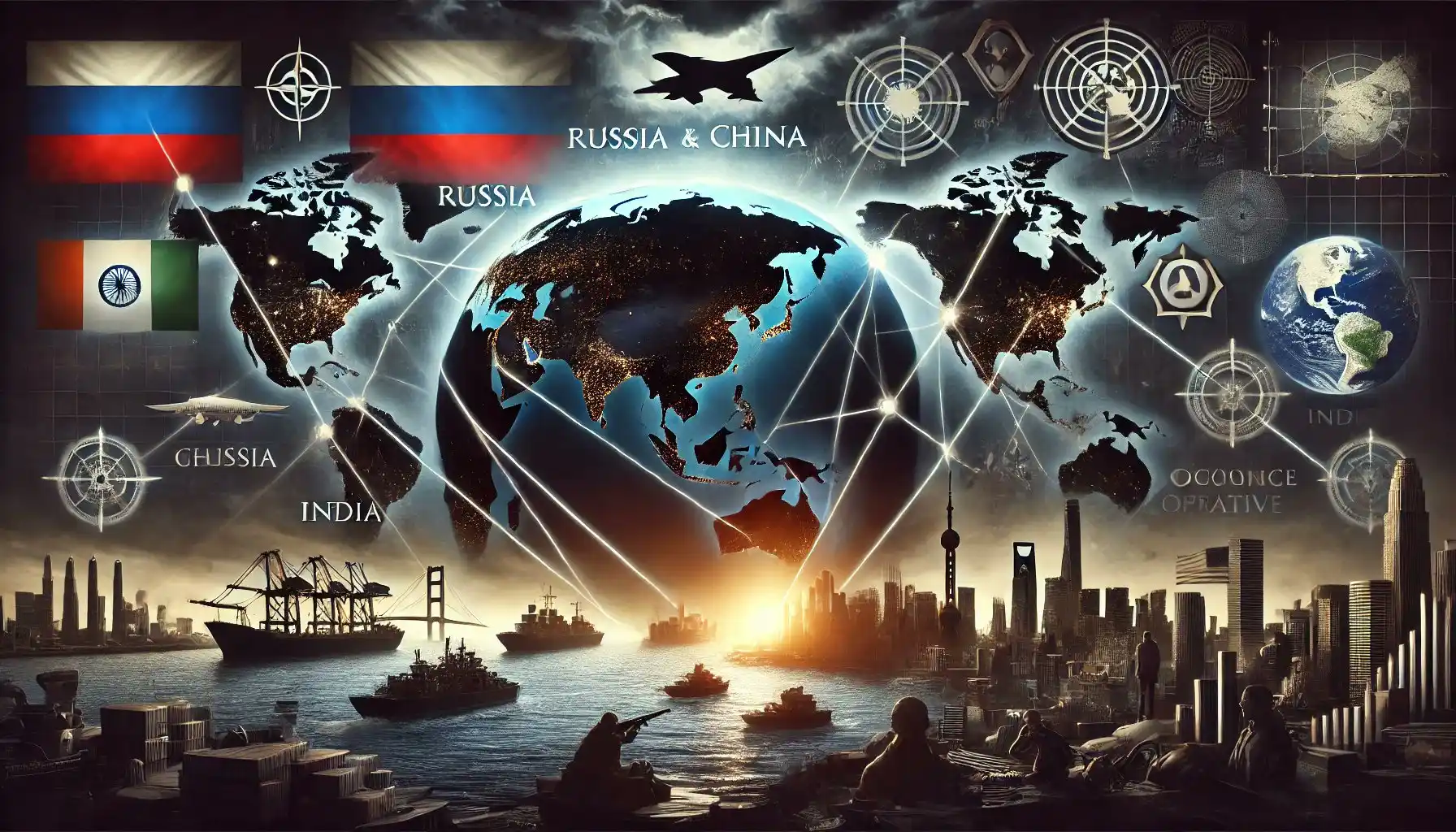1. Respecting Self-Determination: The Ethical Challenges of Mixed and Homogeneous Societies
1.1. Key Aspects of the Scenario:
-
Two Societies with Different Preferences: One society values racial homogeneity and is happy with it. The other values a mixed-race society and is also happy with it.
-
Interference by One Society: The mixed-race society actively works to change the structure of the homogeneous society, using persuasion through media, politics, corporations and education.
-
Conflict and Division: The homogeneous society becomes divided, with some members adopting the new preference for a mixed society and others resisting.
-
The Original Motive: The intervention is based on the dissatisfaction of one group with another’s way of life, despite both societies being content before the interference.
1.2. Logical Evaluation:
-
Racism Definition: Racism typically involves prejudice, discrimination, or antagonism directed at someone of a different race, often rooted in the belief that one’s own race is superior. In our hypothetical scenario, it’s not a simple case of racism but more a question of cultural imperialism.
-
Cultural Imperialism: The mixed-race society is imposing its values on the homogeneous society, not because it sees the other as inferior per se, but because it desires the other to mirror its own structure and ideals. This imposition undermines the autonomy of the homogeneous society, causing division and conflict.
-
Power Dynamics and Ethics: The key ethical issue is that the mixed-race society does not respect the homogeneous society’s right to self-determination. The use of political, educational, corporate and media influence to change another society’s internal structure without consent is an exertion of power that disrupts the harmony of that society.
-
Outcome: The resulting division and conflict indicate that the intervention harms the homogeneous society more than it benefits it. The initial “happiness” is replaced by strife, undermining the premise that the intervention was beneficial or justified.
1.3. Is It Racist? In logical terms:
-
The act itself is not inherently racist if the motivation is not based on a belief in the superiority or inferiority of any race. Instead, it’s an expression of a preference for one societal structure over another.
-
However, the act can lead to racially charged outcomes because it disrupts an established racial dynamic within the homogeneous society, introducing division based on differing views of race and societal organization.
1.4 Is It Ethical?

2. From Cultural Autonomy to Conflict: How Racism and Imperialism Disrupt Harmony
2.1. Racist Scenario.
-
Society A is a mixed-race society and believes that mixed-race societies are inherently superior to homogeneous societies.
-
Society B is racially homogeneous, content, and prefers to remain that way.
-
Society A views Society B’s homogeneity as a sign of inferiority or backwardness, based solely on its racial makeup.
-
Prejudice-Based Intervention: Society A uses its political, economic, and cultural power to label Society B as “racist,” “primitive,” or “undesirable” because of its homogeneity. Society A justifies its actions by asserting that Society B’s racial makeup or cultural preference for homogeneity is inherently “wrong.”
-
Discriminatory Manipulation: Society A actively works to destabilize Society B by spreading propaganda that denigrates its racial identity, culture, or societal structure. Society A implements policies or sanctions against Society B, such as economic isolation, ostracism, and financial/business/career gate-keeping, unless Society B adopts Society A’s mixed-race structure.
-
Forced Demographic Change: Society A facilitates or encourages mass migration into Society B, not to provide mutual benefit, but specifically to dilute Society B’s racial or cultural identity because Society A views it as inferior. Society A refuses to acknowledge or respect Society B’s cultural or social preferences, framing any opposition within Society B as “backward” , “racist”, or “morally deficient”, regardless of Society B’s right to self-determination.
-
Outcome: The people in Society B become divided, with many feeling alienated, disenfranchised, or coerced into accepting a new social structure. Society A’s actions result in social conflict within Society B, but Society A dismisses this as a necessary cost to impose what it views as a “superior” system.
2.2. Why This Is Racist:
-
Belief in Superiority or Inferiority: Society A’s actions are motivated by a belief that its racial makeup or societal structure is superior to Society B’s. This belief drives the intervention.
-
Denigration of Racial Identity: Society A explicitly or implicitly labels Society B’s homogeneity as inferior, rather than respecting it as a legitimate preference or cultural characteristic.
-
Violation of Autonomy: Society A undermines Society B’s autonomy by forcibly altering its racial and cultural makeup against its will, based on racial prejudice.
-
Harmful Outcomes: The destabilization and division caused by Society A’s actions disproportionately harm Society B, perpetuating inequality and conflict along racial lines.
2.3. Ethical Considerations:

3. Geopolitical, Military & Corporate Drivers Behind Demographic Changes
Geopolitical Motivations by Nations
3.1. Russia’s Potential Motivations
-
Strategic Weakening of Western Cohesion: Russia might perceive benefits in a less unified Western society. Social divisions could lead to decreased effectiveness in organizations like NATO, providing Russia with greater regional influence.
-
Exporting Societal Models: With a diverse population of both Christian and Islamic communities, Russia might find it advantageous if Western nations adopt similar religious and cultural dynamics. This could reduce ideological differences and make diplomatic relations more favourable to Russian interests.
-
Influence Operations: By promoting certain narratives through media, academia, and cultural exchanges, Russia might aim to influence public opinion and political landscapes in Western countries, aligning them more closely with Russian strategic goals.
3.2. China’s Potential Motivations
-
Economic Advantage Through Division: China could potentially benefit from Western nations being internally divided, especially in manufacturing export growth, resource export growth, and energy export growth, as domestic focus on social issues might reduce international scrutiny of China.
-
Military Advantage Through Division: China could potentially benefit from Western nations being internally divided, as domestic focus on social issues might reduce international scrutiny of China, economic build-up, and military build-up in Western nations, and therefore it would reduce economic opposition and security opposition to China’s global economic and military initiatives.
-
Strengthening Global Presence: The increase in Chinese migration, particularly to British Columbia, Washington and Caliornia, could foster larger diaspora communities, the rise of states and provinces loyal to China, that amplify China’s global economic and cultural influence, especially in land areas and port areas that borer on the Pacific. This strategic presence on the Pacific coast may also contribute to establishing a geopolitical network, creating a potential ‘ring of territories‘ around the Pacific Ocean, to advance China’s regional, oceanic and global objectives.
-
Strategic Distraction: Social and political divisions in Western countries could divert attention and resources away from rebuilding the shipbuilding industry of Canada and America on the west coast, and from investments into nuclear technology, oil exports, gas exports and commodity exports, technology exports, and international affairs; all areas where China seeks to expand its market share and influence, such as in the South China Sea, Pacific, or through the Belt and Road Initiative.
3.3. India’s Potential Motivations
-
Political Influence and Soft Power: India might aim to bolster its international standing by increasing its diaspora in countries like Canada, especially in British Columbia, potentially influencing political decisions and strengthening bilateral relations.
-
Agricultural and Economic Interests: Given India’s strong reliance on agriculture as a cornerstone of its economy, there may be strategic interest in securing access to arable land abroad. Increased migration could pave the way for agricultural partnerships, targeted land acquisitions from Canada via boosting Canadian sub regions to majority Indian demographics, demographic shifts that establish majority Indian communities in regions of Canada with abundant land resources, enabling land capture, long-term investments and economic influence.
3.4. Potential Geopolitical Strategies Employed
-
Educational and Cultural Exchanges: Countries might use scholarships, cultural programs, academic partnerships or election systems access, to promote their values and perspectives within Western societies.
-
Media and Information Campaigns: Through state-sponsored media outlets or collaborations, or through tar-getting sectors like technology to attain CEO status and Board access, these nations could transfer large corporations and their entire research and technology systems abroad gradually, influence public discourse, and shape perceptions to align with their strategic interests.
-
Economic Investments: Direct investments in key industries, including technology, real estate, and agriculture, could increase dependence on these countries, providing leverage in international relations.
3.5. Ethical and Strategic Considerations
-
National Security Implications: If demographic changes are influenced by external powers aiming to weaken or alter societal structures, this raises concerns about sovereignty and security.
-
Societal Impact: Rapid demographic shifts might lead to internal tensions, which could be exacerbated by external actors to further their strategic goals.
-
Policy Responses: Enhanced Vetting Processes: Implementing thorough background checks to understand the motivations behind immigration applications and implement loyalty pledges, monitored by CSIS and National Security committees, for elected officials to keep leaders accountable to Canada to ethical, national, moral and professional guidelines. Promoting Social Cohesion: Investing in programs that foster unity and shared values among all citizens. Monitoring Foreign Influence: Establishing oversight mechanisms to detect and mitigate undue foreign influence in media, education, corporations based in foreign territories but provide services to Canadians, and politics.
4. Possible Corporate Motivations: Division as a Strategic Tool
4.1. Exploiting Division for Access to National Assets
-
Land and Resource Acquisition: Encouraging societal fragmentation might facilitate the privatization or transfer of public resources to corporate control, particularly in resource-rich nations like Canada. Divisive narratives around historical reparations, immigration, vaccine mandates, centralized police, centralized fire fighting, centralized currency, centralized identification, centralized professional societies, climate change, sustainability, DEI, equity, LGBTQ, and inclusivity could serve as pretexts for gaining access to government power, and therefore land or water resources and citizens, under the guise of crisis response, national emergency or global cooperation.
-
Population Management: Corporations might support policies that promote specific migration patterns or demographic shifts to create labour markets, such as affordable labour markets, or consumer bases aligned with their strategic goals. This could mirror cultural imperialist tactics, using media and education to normalize societal changes that benefit corporate interests.
4.2. Division as a Form of Cultural Imperialism
-
Cultural and Ideological Manipulation: By backing narratives that emphasize cultural or racial divisions, corporations could foster conflict, making populations more distracted and governments less capable of regulating corporate behaviour. This mirrors the strategy of using media, academia, and political systems to undermine self-determination, as previously discussed with geopolitical actors.
-
Fragmentation of National Identity: Corporations might promote policies or cultural narratives that dilute a cohesive national identity, making it easier to influence policies related to resource allocation or population management. This tactic parallels efforts by states like China or Russia to weaken Western societal unity for geopolitical advantage. (Ex: “Diversity is Our Strength”, instead of “Unity is Our Strength”.)
4.3. Hypothetical Examples of Corporate Strategies
-
Media Influence: Corporations might use their control of major media outlets to amplify divisive cultural issues, drawing public attention away from corporate acquisitions or privatization efforts. Similar to how state actors use media for cultural imperialism, this tactic could normalize societal changes that align with corporate goals.
-
Policy Shaping: Supporting think tanks or lobbying efforts that push for changes in land use, resource extraction, or immigration policies under the pretext of economic or environmental concerns could mirror state-driven efforts to impose cultural models.
-
Educational Initiatives: Like the influence strategies of nation-states, corporations might fund educational programs or academic partnerships that promote narratives favourable to their long-term objectives, subtly shaping societal values over generations.
Related Content:
Title: “The Cultural Clash: Western Europe’s Demographic Shifts and the Risk of Future Conflict” https://skillsgaptrainer.com/the-cultural-clash-western-europe/
Title: “Is Canada Facing a Religious Arson War?” https://x.com/SkillsGapTrain/status/1800423311408582807
Title: “Timeless Struggles Against Tyranny: The Erosion of Western Values and the Rise of Censorship and Punishment in Canada” https://x.com/SkillsGapTrain/status/1800878955269910802
Title:“The Inversion of Morality: The Erosion of Western Values and the Loss of Christian Ethical Foundations” https://x.com/SkillsGapTrain/status/1800848103706161368
Title: “Ideological Subversion and the Demoralization of RCMP Officers” https://skillsgaptrainer.com/ideological-subversion-and-demoralization-of-police/
Title: “Canada’s Future at Risk: The New Global Threats to Our Borders and Security” https://skillsgaptrainer.com/canadas-future-at-risk/
Title: “Battle for Humanity: How Rising Ideological Extremism Could Ignite a Century of Conflict” https://x.com/SkillsGapTrain/status/1830676962895110416
Title: “Unmasking the Assault: How Ideological Subversion and a Disregard for Heritage Are Undermining Canada’s Military” https://x.com/SkillsGapTrain/status/1819870765086339413
Title: “The Impact of Demographic Shifts on National Sovereignty and Stability in Western Nations” https://x.com/SkillsGapTrain/status/1814220033947512923
Title: “The Inversion of Morality: The Erosion of Western Values and the Loss of Christian Ethical Foundations” https://x.com/SkillsGapTrain/status/1800848103706161368
Title: “From Unity to Division: The Erosion of Christian Values and the Rise of Woke Culture” https://x.com/SkillsGapTrain/status/1810115402971684997
Title: “The Cultural Clash: Western Europe’s Demographic Shifts and the Risk of Future Conflict” https://x.com/SkillsGapTrain/status/1810197270622617731
Title: “Undermining Bravery, Strength, Valour, and Freedom: The True Cost of the Assault on Combat Sports” https://x.com/SkillsGapTrain/status/1809347762498031762
Title: “United for Freedom, Human Rights, Public Safety, and the Future’s Principles: A Response to the Liberal Party’s Failures” https://x.com/SkillsGapTrain/status/1806132181720617051
Title: “Ideological Subversion and the Demoralization of RCMP Officers” https://x.com/SkillsGapTrain/status/1812965996048658902
To see our Donate Page, click https://skillsgaptrainer.com/donate
To see our YouTube Channel, click https://www.youtube.com/@skillsgaptrainer
